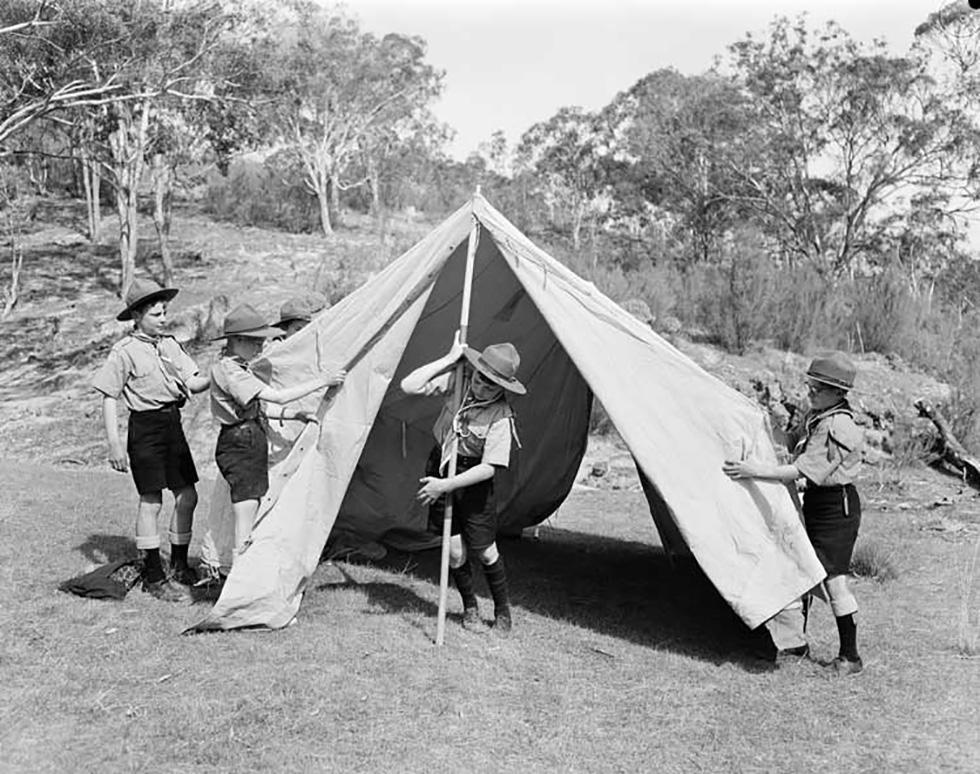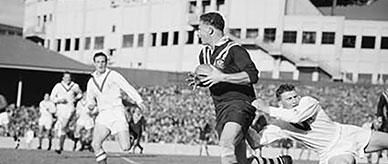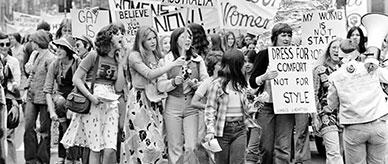


About this record
This is a black-and-white photograph of members of the Fourteenth Canberra Troop of Boy Scouts erecting a tent at an unidentified location near the Murrumbidgee River in the Australian Capital Territory (ACT).
Educational value
- The Boy Scouts was a youth organisation officially founded in England in 1908 by former British soldier Robert (later Lord) Baden Powell. With the motto of 'be prepared', it had the objective of encouraging the physical, intellectual, social, emotional and spiritual development of young people. Girls initially belonged to a parallel organisation, the Girl Guides, but they are now members of Scouts in Australia and in many other countries. The organisation is now known simply as 'the Scouts'. In 2005 the Scouts were the biggest youth organisation in Australia (65,000 members) and in the world (about 28 million members).
- Camping (as shown in this photograph) was an inspiration for the scouting movement. Baden Powell had developed an army manual called Aids to Scouting while in the British Army in India, but it was after a boys' camp in 1907 that he developed his Scouting for Boys. For years it was one of the bestselling books in English-speaking countries and was translated into many other languages. Scouting as a movement grew in line with the popularity of the book.
- Girls and young women were admitted in 1973 into the 'Venturer' and 'Rover' sections (ages 14–26), and in 1988 into its Cub and general Scout sections (ages 7–14). Since 1990, a Joey Scout section has also been open to both boys and girls (ages 6 and 7).
- This photograph shows members of the newly formed Fourteenth Canberra Troop of Boy Scouts, who are either at their first camp, or practising for it. Although the Scouts has always been a non-sectarian organisation, this particular troop, formed in August 1957, comprised boys linked to St Paul’s Anglican Church in Manuka. Although scouting began in Australia in 1908, the First Canberra Scout Troop was not formed until 1917. By 2005, the ACT had 37 troops and 8 Rover 'crews'.
- A key Scout activity is erecting a tent at a camping site. As well as camping, Scouts undertake a wide range of adult-supervised activities, both indoors and outdoors, emphasising skills such as survival, innovation and problem-solving, as well as service to others and good citizenship.
- The tent in the photograph is a 'cottage' shaped canvas tent, which is relatively easy to erect, with poles and ropes providing support. Sometimes a large canvas ‘fly’ would be put over such tents to provide shade or extra protection from rain, and a shallow ditch would usually be dug around the outside to carry water away in case of rain.
- The Boy Scouts wore uniforms, including wide-brimmed hats and scarves that had to be specially tied and held in place with a ‘woggle’ close to the neck. ‘Proficiency’ badges would be sewn onto the shirts after the boys had passed tests in fields such as bushcraft, first aid, camping, cooking, and knot-tying. Although aspects of the uniform have changed, scouting administrators have always insisted on neat, clean and properly worn uniforms, and carry out military-type inspections.
- The boys in the photograph may have been attracted to the military aspects of scouting, because they encountered military themes in popular culture, including movies and comics. It can be hard for outdoor recreational activities to compete with television these days—but television didn’t arrive in Australia’s major cities until 1956, and it didn’t reach the ACT until 1962. reach the ACT until 1962.
Acknowledgments
Learning resource text © Education Services Australia Limited and the National Archives of Australia 2010.
Related themes
Need help with your research?
Learn how to interpret primary sources, use our collection and more.


